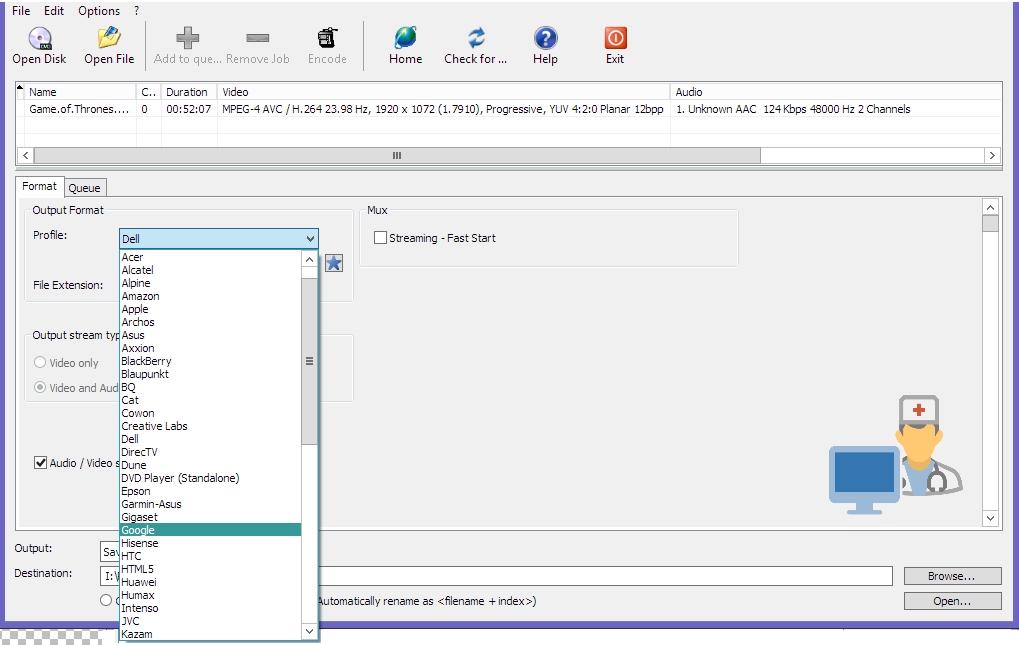

- Converter unable to obtain hardware information how to#
- Converter unable to obtain hardware information movie#
- Converter unable to obtain hardware information portable#
- Converter unable to obtain hardware information software#
- Converter unable to obtain hardware information windows#
The trademark was registered by the USPTO in November 2003, and Grasso assigned it to Apple Computer, Inc. The first iPod kiosks had been demonstrated to the public in New Jersey in March 1998, and commercial use began in January 2000 but had apparently been discontinued by 2001. Patent and Trademark Office (USPTO) in July 2000 for Internet kiosks. Grasso of New Jersey had originally listed an "iPod" trademark with the U.S.

Jobs announced it as a Mac-compatible product with a 5 GB hard drive that put "1,000 songs in your pocket." Īpple researched the trademark and found that it was already in use. The product ("the Walkman of the twenty-first century" ) was developed in less than one year and unveiled on October 23, 2001. Chieco saw an analogy to the relationship between the spaceship and the smaller independent pods in the relationship between a personal computer and the music player.
Converter unable to obtain hardware information movie#
After Chieco saw a prototype, he thought of the movie 2001: A Space Odyssey and the phrase "Open the pod bay doors, Hal", which refers to the white EVA Pods of the Discovery One spaceship.
Converter unable to obtain hardware information how to#
The name iPod was proposed by Vinnie Chieco, a freelance copywriter, who (with others) was called by Apple to figure out how to introduce the new player to the public. Īpple contracted another company, Pixo, to help design and implement the user interface (as well as Unicode, memory management, and event processing ) under the direct supervision of Steve Jobs. The aesthetic was inspired by the 1958 Braun T3 transistor radio designed by Dieter Rams, while the wheel-based user interface was prompted by Bang & Olufsen's BeoCom 6000 telephone. The power supply was then designed by Michael Dhuey and the display design made by design engineer Sir Jonathan Ive in-house Apple.

Within eight months, Tony Fadell's team and PortalPlayer had completed a prototype.
Converter unable to obtain hardware information software#
Fadell partnered with a company called PortalPlayer to design the software for the new Apple music player which became the iPod OS. Time constraints forced Fadell to develop various components of the iPod outside Apple. Due to the engineers and resources at Apple being constrained with the iMac line, Fadell hired engineers from his startup company, Fuse, and veteran engineers from General Magic and Philips to build the core iPod development team. įadell found support for his project with Apple Computer and was hired by Apple in 2001 as an independent contractor to work on the iPod project, then code-named project P-68. Rubinstein had already discovered the Toshiba hard disk drive while meeting with an Apple supplier in Japan, and purchased the rights to it for Apple, and had also already worked out how the screen, battery, and other key elements would work. Fadell, who had previously developed the Philips Velo and Nino PDA, had started a company called Fuse Systems to build the MP3 player and had been turned down by RealNetworks, Sony and Philips. Īs ordered by CEO Steve Jobs, Apple's hardware engineering chief Jon Rubinstein contacted Tony Fadell, a former employee of General Magic and Philips who had a business idea to invent a better MP3 player and build a music sales store to complement it. Apple thought flash memory-based players didn't carry enough songs and the hard drive based ones were too big and heavy so the company decided to develop its own.
Converter unable to obtain hardware information portable#
Portable MP3 players had been around since the mid 1990s, but Apple found existing digital music players "big and clunky or small and useless" with user interfaces that were "unbelievably awful". From left to right: iPod Video, iPod 4th Generation, iPod Mini, iPod Nano, iPod Shuffle.
/Software-to-Hardware-Key-Conversion/Step-4_5.png)
During the middle of 2010, iPhone sales overtook those of the iPod. While the iPhone and iPad have essentially the same media player capabilities as the iPod line, they are generally treated as separate products. As of iOS 5, separate apps named "Music" and "Videos" are standardized across all iOS-powered products. īefore the release of iOS 5, the iPod branding was used for the media player included with the iPhone and iPad, a combination of the Music and Videos apps on the iPod Touch.
Converter unable to obtain hardware information windows#
Prior to macOS 10.15, Apple's iTunes software (and other alternative software) could be used to transfer music, photos, videos, games, contact information, e-mail settings, Web bookmarks, and calendars to the devices supporting these features from computers using certain versions of Apple macOS and Microsoft Windows operating systems. Like other digital music players, some versions of the iPod can serve as external data storage devices. As of May 28, 2019, only the iPod Touch (7th generation) remains in production. The first version was released on October 23, 2001, about 8 + 1⁄ 2 months after the Macintosh version of iTunes was released. The iPod is a line of portable media players and multi-purpose mobile devices designed and marketed by Apple Inc.


 0 kommentar(er)
0 kommentar(er)
